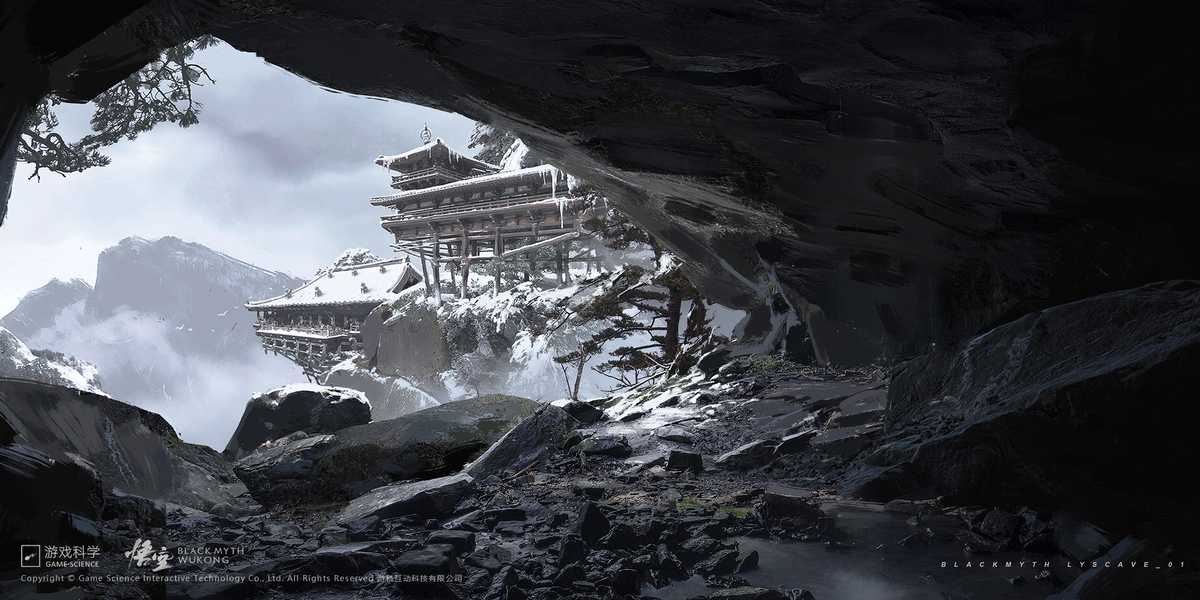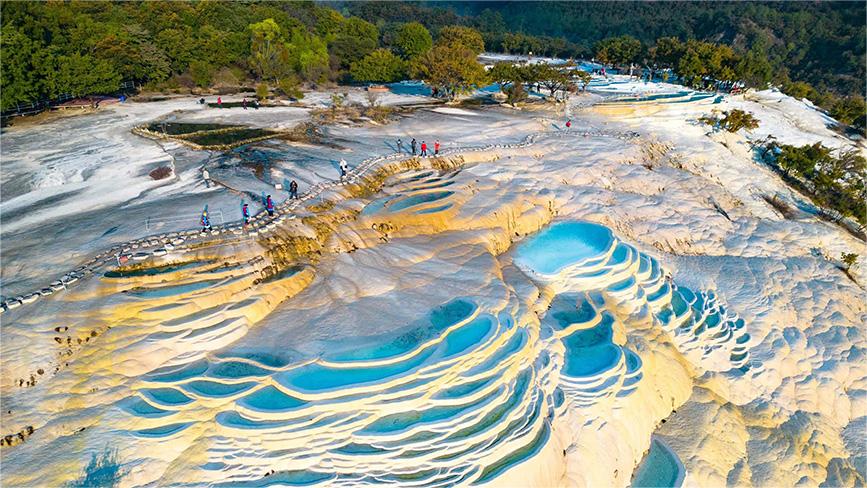Hit video game sparks domestic tourism boom

Xuankong Temple, which is built into a cliff in Datong, Shanxi province, is one of the cultural landmarks that has inspired a scene in Black Myth: Wukong, a Chinese-developed video game. (CHINA DAILY)
The Chinese mythological hero Wukong, whose popularity has surged worldwide thanks to a new video game, has also sparked a tourism boom as travelers seek out certain destinations with ancient architecture and heavy Chinese vibes.
A lively discussion of Black Myth: Wukong has circulated on the internet after the Chinese-developed video game was released on Tuesday. The game is based on the classic Chinese novel Journey to the West, in which Wukong, also known as the Monkey King, is one of the main characters.
The game's stunning visuals and re-creation of ancient Chinese architecture have quickly turned some of the country's provinces and cities into in-vogue travel destinations.
North China's Shanxi province is among the travel spots benefiting from the game's popularity and the new tourism boom. The province contributed 27 game scenes out of the game's total of 36, and most of the scenes are closely related to Buddhist culture and Taoism.

One of the cultural landmarks in Datong, Shanxi province, has inspired a scene in Black Myth: Wukong, a Chinese-developed video game. (CHINA DAILY)
Travel portal Tuniu said on Tuesday that soon after the game's official release, searches for Shanxi on the platform were up 20 percent compared with the number on Monday. In addition, so far this month, travel bookings to Shanxi have doubled from July's figure, with the number of visits to the province growing 50 percent and hotel bookings surging 120 percent on the platform.
Qunar, another online travel agency, said that as of Wednesday morning, searches for Taiyuan, Shanxi's capital, increased 10 percent from the previous week, with searches continuing to grow. The most sought-after spots in Shanxi, according to Qunar, are the Yungang Grottoes in Datong, which feature Buddhist cave temples made during the Northern Wei Dynasty (386-534); Mount Wutai, a sacred Buddhist mountain; and the ancient city of Pingyao. All three destinations are UNESCO World Heritage sites.
Chen Shaoqing, deputy director of Shanxi's Culture and Tourism Department, said: "Shanxi has rich tourism resources, like numerous places that feature ancient Chinese architecture of profound cultural heritage but have lower domestic or world recognition. The game has demonstrated Shanxi's cultural relics in a pleasing and effective way, arousing people's interest in the province's culture and travel."
Chen said the province is making efforts to turn the craze inspired by the game into long-term tourism prosperity.
"Travelers' needs are a priority, so we will optimize the services in tourism spots and public transportation, and tighten the supervision of taxis and hotel pricing to let travelers have a good experience," he said.
"We hope to take the opportunity to build up a good reputation and let China's long-standing and profound culture be known by more people in the world," Chen added.
Wu Yang, 35, a video game enthusiast from Jiangxi province, who was visiting Xiaoxitian, a temple complex in the Shanxi city of Linfen, said that he and his wife have been traveling in the province in recent days and stopped at the tourism site to feel the charm of traditional Chinese culture.
Shanxi is not alone in benefiting from the travel boom, as many other provinces and cities have joined the race to attract travelers by riding the video game's wave of popularity. The game has not only re-created Shanxi's architecture, but also ancient buildings and Buddha statues from places across the nation, including Chongqing and Sichuan province in Southwest China, and Zhejiang province in East China.
Lianyungang in East China's Jiangsu province, where Huaguo Mountain — known as the "hometown of Wukong" in Journey to the West — is located, has also been a destination of great interest. The Huaguo Mountain tourism site announced on Thursday that game players who complete all missions of Black Myth: Wukong are invited to visit the site free of charge. The special offer started on Thursday and will continue through Dec 31.
Wei Changren, founder of btiii.com, a tourism-related financial news portal, said: "People's passion for the video game, and the 'set-jetting' tourism that the game has brought about, show people's growing confidence in Chinese culture. There's no doubt that the game's popularity will generate great tourism benefits for Shanxi and other places that have contributed to the game's scenery re-creation, letting the world know the essence of Chinese culture."
"Set-jetting" refers to the practice of traveling to one's favorite movie, television, or in this case, video game locations.
However, Wei added, "These destinations need to increase their supply of tourism products and services and improve their infrastructure to keep a large number of travelers".
He said that culture-driven tourism won't be just a fad, but rather a long-term trend.
"China has a profound history, and has culture yet to be fully tapped by modern technologies and ideas," Wei said. "The success of Black Myth and the popularity of 'set-jetting' tourism will boost the confidence of domestic companies and create more products with cultural, social, and economic benefits."
Photos
Related Stories
- Video game based on classic novel goes viral
- Interactive game featuring Monkey King gains immense popularity
- Video game "Black Myth: Wukong" takes global players on journey beyond West
- Homegrown games revive glamour of Chinese traditional culture
- Video game "Black Myth: Wukong" receives positive responses from int'l community
- Phenomenal popularity of Black Myth: Wukong sparks tourism surge in filming location Shanxi
Copyright © 2024 People's Daily Online. All Rights Reserved.









